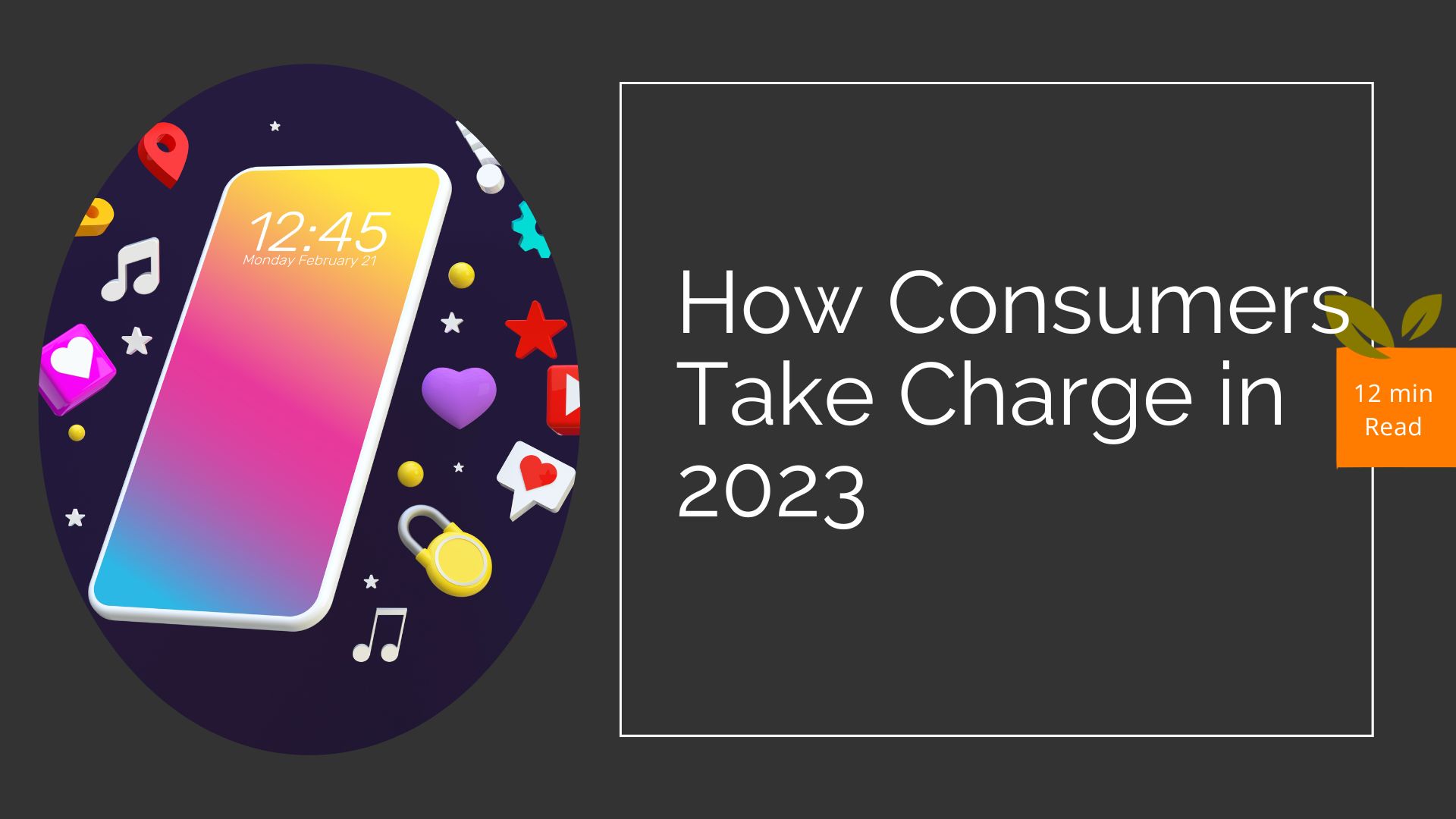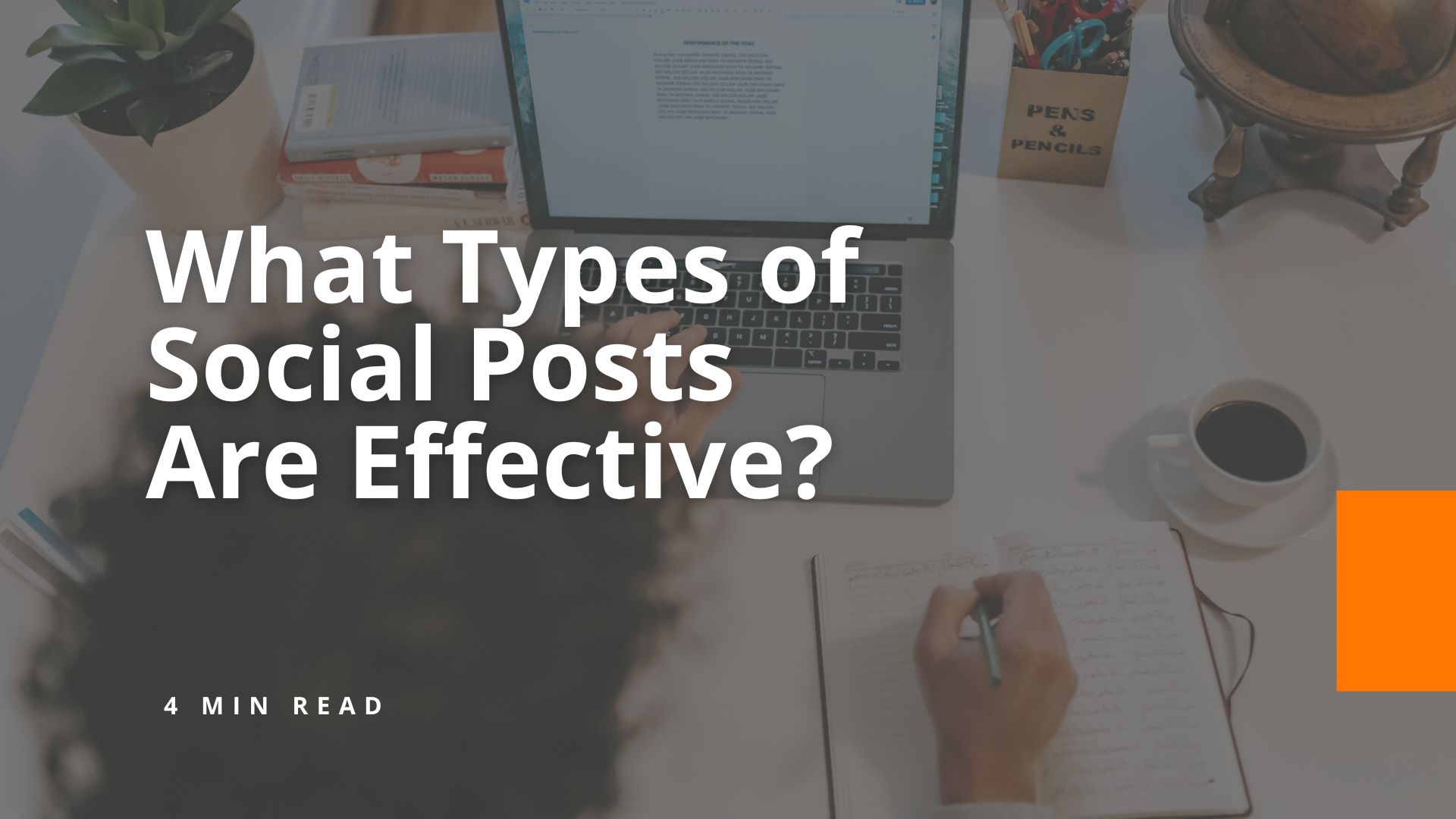The Top 10 Social Media Marketing Trends You Need to Know for 2023

If you think your CEO is in charge of your brand, think again. Consumers are in charge now. That’s just one of the social media marketing trends as outlined by HubSpot that should be on your marketing team’s radar.
Consumers have had an ever-increasing impact on brands that’s only been accelerated by the pandemic, putting them firmly in charge this year and into the coming decades.
Your customers want faster service, more personalized content and better experiences. And they expect your company to act now.
For your brand to thrive in the Age of the Consumer, you’ll have to hear and respond to their demands.
We’ve put together a list of the top 10 trends in social media marketing for the year to come, which includes valuable insights into why these trends matter and key takeaways you can implement today to drive better results in 2023 and beyond.
1. TikTok Actively Takes Over
As we move into 2023, there’s one trend that is almost guaranteed to continue moving forward: The continued domination of TikTok, the short-term video social media platform, has repeatedly broken download records, becoming the go-to app for connecting with future and current consumers.
TikTok is powered by a highly personalized content recommendation system that can help brands gain exposure to a qualified, engaged audience and allow brands to connect with them.
The app company is looking into introducing an e-commerce aspect and monetization model.
The bottom line? Brands that want to connect with consumers need to be TikTok savvy.
Key Takeaways:
- Throw out tradition. (Embrace user-generated content.)
- Follow your audience.
- Prepare for a monetization model.
- Keep expansion on the horizon.
2. Social Ads Develop as Cookies Get Crunched
As Google works to phase out cookie tracking by 2023, the future of social advertising is uncertain. Brands need to learn to balance the need for consent and compliance with the need for personalized services as they relate to the consumer.
While the “cookieless future” seems bright for advertisers, good publishers, content creators and consumers, those who have been profiting off of privacy-invasive data collection from users will need to reconsider and pivot their strategy.
In the past few years, social platforms have become a huge asset for advertisers to reach consumers in a more direct and personal way. The internet’s ability to collect billions of data points on users is an absolute gold mine for brands.
Key Takeaways for Brands:
- Tap into the trust of user-generated content (UGC).
- Make sure your decisions are data-driven (metrics-focused).
- Remember the “Three E’s”: engage, entertain and educate.
- Utilize social media data points (Facebook has over 52,000) to target your audience.
3. Social Selling Simplifies the Journey
Previously, social commerce focused on ads or promotions, but now platforms are beginning to provide innovative selling solutions that focus on making the customer decision journey easier for consumers.
A great example of this is when Instagram introduced new shopping features that allowed its users to buy items without ever leaving the app. Brands should consider reevaluating the purchasing paths they offer and take advantage of social selling opportunities through Instagram offerings like posts, reels, stories and more.
Pro Tip: Look into Instagram influencers. Influencers endorse brands through strategic partnerships, promoting their products and services to their large, loyal follower bases.
Instagram’s influencer marketing impact cannot be understated: 69 percent of marketers planned to disburse more money on Instagram influencers than any other market in 2020 alone.
Key Takeaways:
- Get personal with chatbots or use consumer analytics tools.
- Keep up with current social commerce trends.
- Utilize user-generated content (UGC) as a way to connect.
- Use attractive visuals.
- Make the buying process simple and seamless.
4. Post-pandemic Content Adapts to Consumer Needs
As a result of the pandemic, marketers have had to adapt to the content trends that followed, challenging the existing rules of customer relationships and brand building.
The pandemic drastically increased social media users all over the world. From 2020 to 2021, over half a billion more people are using social media worldwide, indicating an almost 14 percent year-over-year increase.
To successfully navigate this change, brands must communicate in local and detailed terms and target specific audiences based on relevancy. Content curated to a generation, location, gender or hobby will strike a chord with new and previously existing users.
Consumers are actively seeking stories shaped for them that not only contain the information they want but are also presented in a style they want to consume. This led to an increase in live audio and video; formats previously loved but now with added interaction and engagement.
Key Takeaways:
- Improve the customer experience.
- Create more bite-sized (digestible in length, form and style) content.
- Be specific. (Gain access to consumer insights).
- Tap into audio (podcasts, vocal creations).
5. Omnichannel Engagement Changes the Landscape
Today, 64.5 percent of internet users get their breaking news from Facebook, Twitter, YouTube, Snapchat and Instagram instead of traditional media outlets. With the rise in information readily available comes an opportunity to grow your consumer connections and expand audiences by giving the information consumers want.
However, there’s also an increased risk of misleading content and fake news. If you aren’t telling the right story, consumers will find it somewhere else, with content that is possibly detrimental to your business.
Key Takeaways:
- Share information that resonates: 84 percent said watching a brand’s video convinced them to subscribe to a service or make a purchase.
- Tackle disinformation. (Provide information your audience is looking for.)
- Focus on your audience. (Share honest and relevant information.)
6. Maturing Influencer Marketing Comes of Age
New rules have resulted in increased influencer regulation and responsibility, meaning influencer marketing now offers fewer risks with better results.
As the impact of social media continues to grow, so too does the impact and weight of influencers. Many influencers have thrived with drastic audience and engagement growth.
The line between social media and e-commerce is becoming increasingly blurred, making influencer marketing a powerful way to connect with consumers, which allows brands to flourish and see immediate results.
Key Takeaways:
- Engagement rate, exposure or e-commerce? Define your goals and make sure your selected influencers are aligned with your brand.
- Authenticity rules: Consumers seek deeper connections with influencers and are looking for value-driven content.
- Pay attention to user sentiment.
- Value your influencers and never underestimate their impact.
- Consider influencers of all sizes (macro- vs micro-influencers have unique pros and cons).
7. Brands Take the Lead With Decentralized Social Media
Brands need to double down on making sure their platforms, apps and channels include a social component to them. Communities are important and they’re not just limited to the main social media platforms anymore.
Many brands are now building their own in-house social networks, with in-app forums and features to take back control of their audiences. Decentralized social media has a different infrastructure with no central server and no company controlling the site.
We’ll likely begin to see more brands — specifically those in the travel, payment and navigation space — incorporate social components directly into their user experience.
When consumers can interact with their social group in an app, overall engagement and retention increase.
Key Takeaways:
- Be aware of control, content and censorship: Users will possess more control, are becoming less likely to accept censorship and their UGC will surpass other content creation efforts.
- Consumers want to connect, so let them: Use consumer insights, reference competitors or industry leaders to see how others are succeeding or flopping.
- Prioritize UX (user-experience).
- Centralize your customer data.
8. Metaverses as the Next Consumer Connection
The metaverse can be defined as an amalgamation of the physical world, the augmented and the virtual. The recent increase in the widespread availability of technology and social media gave AR games a strong incentive to create and maintain a digital space or metaverse of their own.
The key to staying relevant in our ever-evolving technological landscape is consumer intelligence, whether it’s through games like Minecraft, Fortnite, Roblox or metaverses that are yet to be created.
Like many of the trends that we will see driving 2023, the inclusion of virtual reality is being spearheaded by younger generations. These virtual environments allow for competition, creativity and collaboration, keeping them at the forefront of the digital age.
Key Takeaways:
- Understand the communities you’re trying to reach. (People won’t be interested in your brand, platform or the space you build if it does not suit their needs and their interests.)
- Become cordially competitive. (if you’re going to enter the digital realm and be successful, you need to be aware of what others are doing and avoid their mistakes.)
- Experiment and get creative.
- Err on the side of over-inclusive: Consider everyone’s voice equally valuable.
- It’s a consumer’s world. You need to be constantly aware of what the consumer is saying and thinking.
9. Brand Inclusivity Becomes Brand Critical
Consumers are no longer interested in empty promises, one-time donations or performative allyship (aka “woke washing.”) They have high expectations and prefer brands that take initiative to foster connections with their audience, as well as bring together people with differing opinions.
As a result of the pandemic forcing consumers to make changes in how they live their lives, they want more from the brands they follow and buy from, and this trend will continue in 2023.
Statistically speaking, about 70 percent of employees claim they would not work for a company without a strong purpose, which has affected the way brands tackle brand inclusivity and the way brands structure their campaigns for 2023.
Key Takeaways:
- Listen before you speak. (Consider what your audience is saying.)
- Be prepared for the next major issue.
- Real people make real connections. (Ensure your brand’s voice is genuine, consistent and in line with your goals.)
- Build your community.
- Actions speak louder than words. (Some brands only make statements in support of prevalent social issues, but don’t take action where it counts: Be the difference.)
10. More Online Communities Develop and Take Control
Brands need to be more strategic, with specific content shaped around the consumer, to establish loyal and engaged communities. To succeed in the post-pandemic marketplace, it is critical to strategize digital infrastructures and collective spaces, with the strengthening of these online communities continuing to be a priority well into 2023.
Social distancing and isolation have increased our need to socialize and connect. 2023 will witness the continued increase of online communities, and these groups will have an increasing role in businesses to cultivate relationships and address their needs.
Social communities can come together and grow, often very quickly, and successful brands will be able to tap into these communities with the right message and intention.
Key Takeaways:
- Pursue what truly matters to your brand. (Before diving in, make sure the social issue is something you can follow through on.)
- Give consumers a reason to stick around.
- Transparency is key. (Allow for engagements and recognition wherever possible.)
- Be wary of potential social crises. (Be careful what you attach your brand name to.)
- Be persistent and scale up. (Communities grow because people feel good about being a part of something.)
Next Steps in Social Media Marketing
If you’re thinking to yourself that keeping up with the latest in social media marketing trends can be a bit overwhelming, you’re not alone. As a top social media marketing and paid campaign firm, we help you take advantage of the best social media and paid campaign tactics. Schedule a non-sales call so you can manage your social media with confidence today.










